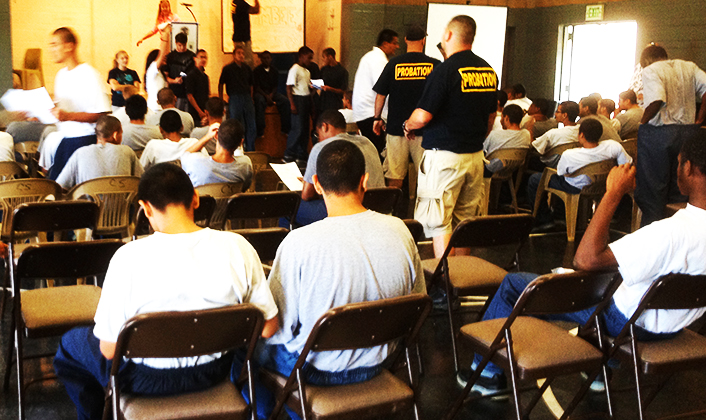THE IMPORTANCE OF HELPING LA COUNTY’S OFTEN NEGLECTED GIRLS
Last month the Los Angeles County Board of Supervisors voted to approve the creation of a five-year initiative to better address the disproportionate disadvantages and burdens faced by LA County’s women and girls.
The initiative is very much needed. In the arena of juvenile justice programs and reforms in particular, the focus tends to be male-centric, and too often fails to recognize the very different but equally urgent needs of females—as Xin Li and Phillomina Wong documented in an important story for WLA last year.
Thus it is good news that, later this month, the board is expected to vote on a new motion aimed at improving troubling conditions that hamper girl probationers housed in the county’s juvenile probation camps from maintaining adequate personal hygiene. (WLA wrote about the new motion by supervisors Mark Ridley-Thomas and Hilda Solis, and about the distressing findings of a study commissioned by the board, which forms the motion’s underpinnings.)
Yet, while the board’s recent steps to help the county’s girls and women are broadly welcomed, some advocates want to make sure no one forgets that, in paying important attention to our girls, we must not mistakenly lose focus on the very serious needs of our county’s boys.
Joseph Charney, a retired prosecutor, and longtime justice deputy for former LA County Supervisor Zev Yaroslavsky, expresses these concerns in a new op ed for the Daily News.
CAN’T HELP GIRLS WITHOUT HELPING BOYS
Specifically, Charney writes that to reach the hoped for goals for LA County’s girls and women, the plan should “expand to also focus on disadvantaged men and boys.”
The success of men and intact families, he writes, “is an essential part of any agenda that purports to further the opportunities, safety and health of disadvantaged girls and women. Many of our stressed communities are fractured by too many fatherless homes, leaving too many boys without essential guidance and oversight. Without competent, caring males and intact families, women’s lives are often negatively impacted.”
Charney also points to the fact that, while girls and women suffer a list of gender specific disadvantages, boys and men do as well. “They make up 87 percent of the jail population in L.A. County. Homicide is the leading cause of death here for men between the ages of 17 and 44. They suffer traffic fatalities at three times the rate, and addiction and suicide at twice the rate of women, and comprise two-thirds of L.A.’s homeless.”
In school, Charney notes, boys are three times more likely than girls to have reading and learning disabilities, and also far more likely to suffer from autism and dyslexia. Boys graduation rate from high school and college is under that of girls. also graduate at far lower rates from high school, undergraduate and graduate institutions than women. The list is a long one.
“Concentrating on women’s disadvantages is too limiting for a county-wide strategy,” Charney writes. It “implies that women need increased county focus more than men do. This is a false premise.”
On the other hand, strategies that recognize the differences in the needs of the two genders are also important.
HELPING BOYS (AND GIRLS) ALSO MEANS POINTING OUT THEIR SUCCESSES
A case in point is a new and intriguing report from UCLA’s Black Male Institute that shows a crucial part of helping boys and men of color, who are disproportionately struggling on many fronts, is to provide a counter narrative “to the often-told story about these young men being in constant crisis.”
With this goal in mind, the report—entitled The Counternarrative: Reframing Success of High Achieving Black and Latino Males in Los Angeles County-— paints a new portrait of the success of black and latino males across Los Angeles county, with the objective of offering “an account that is rarely seen and seldom conveyed: where these young men are succeeding.”
In doing so, the report not only shines a light on where black and latino boys are high achieving, it looks at and helps identify “people, programs, and practices” that these young men believe have made a significant impact on their lives. In so doing, it offers examples that can be replicated in LA County and beyond.
And, happily, while this Counter Narrative report is about boys and young men, its authors are careful to point out that girls and women need the same kind of attention. Therefore the authors “make a loud call for similar interventions, studies, and reports which addresses solutions of support for the most vulnerable women in our society.”
In other words, when it comes putting our newest and best efforts toward helping LA County’s girls or boys—to quote the late futurist writer Aldous Huxley—nothing short of everything will really do.
Yet, to get “everything” done usually requires, in purely practical terms, that we break our forward movement into a series of individual steps.

